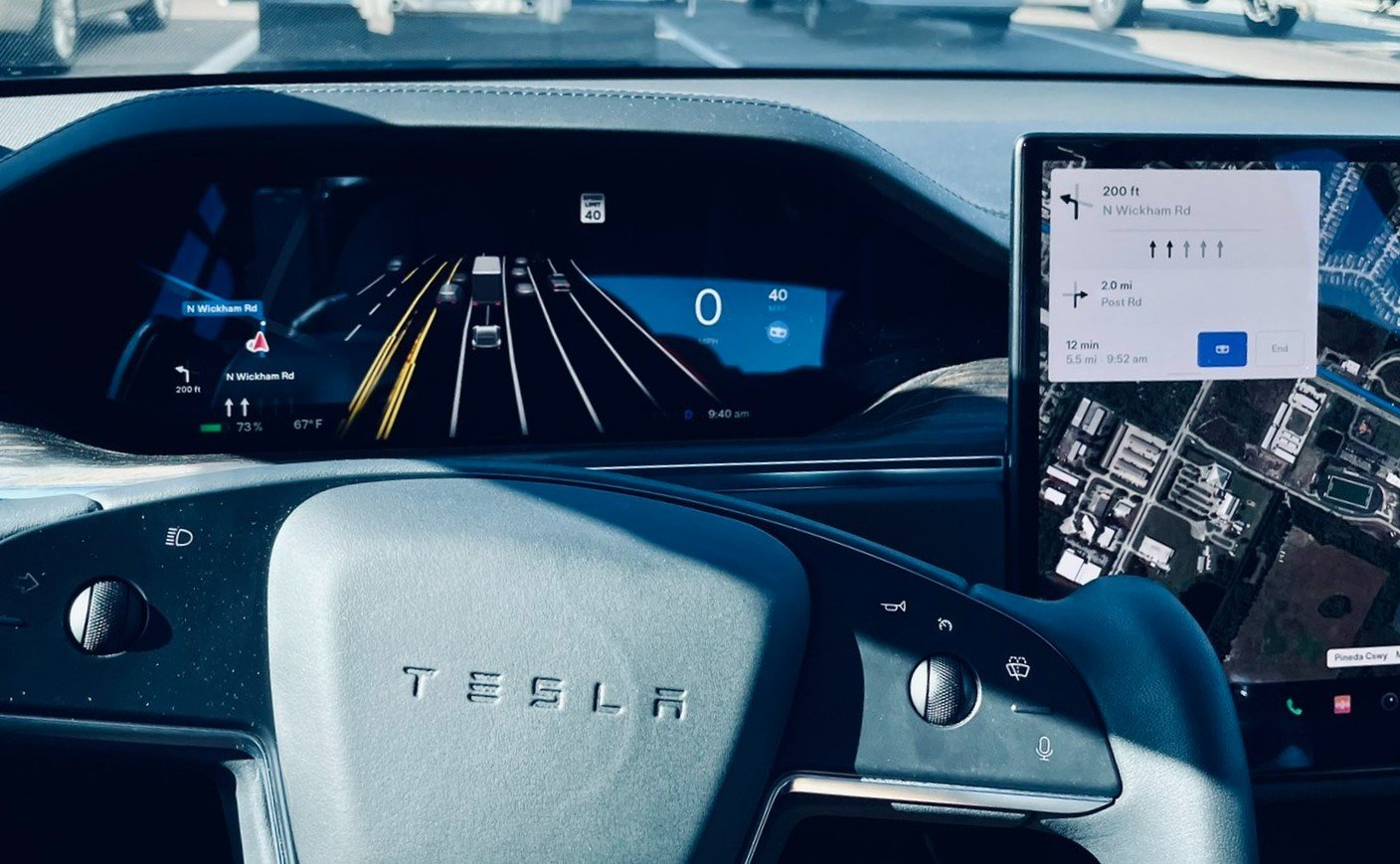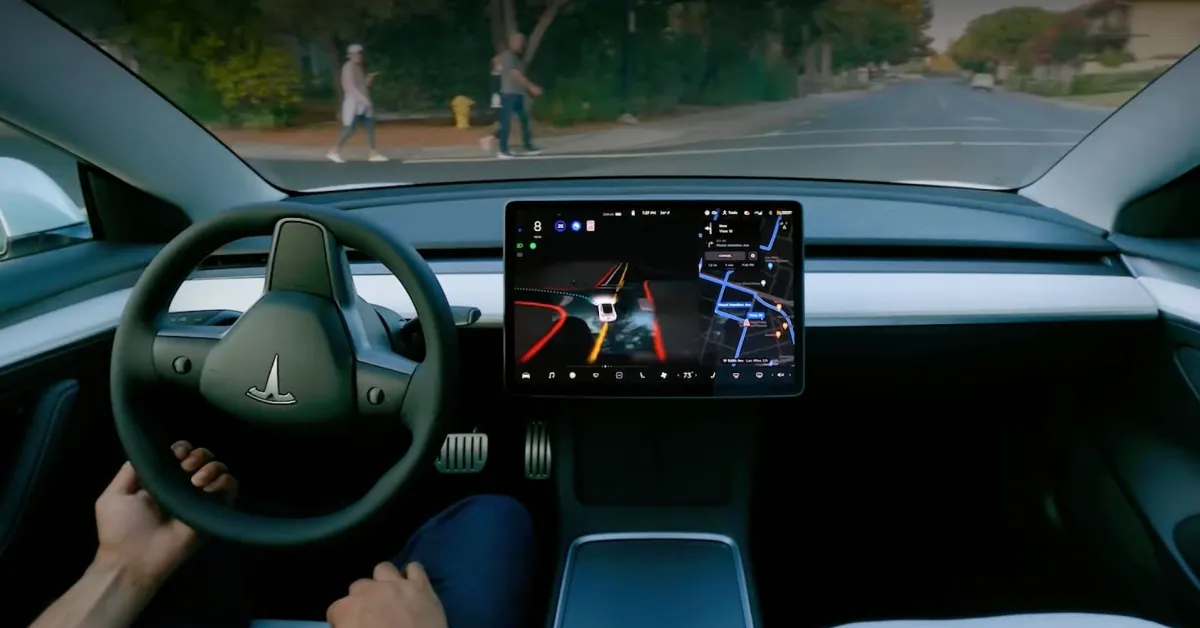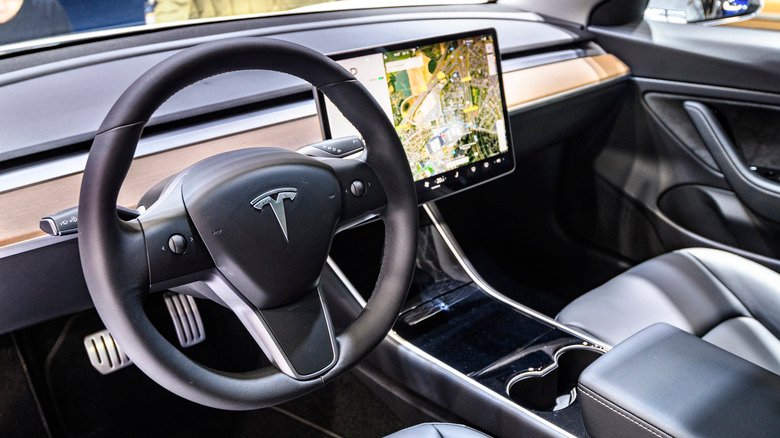As driver-assist technologies become more common in newer vehicles, many drivers wonder which types of technologies work best for them. Two terms you commonly hear are Tesla Autopilot and Full Self-Driving. You aren’t alone, and automation and driver assistance technology are here to help.
What is Autopilot?
Autopilot is a driver assistance system designed to make driving safer. It can regulate the car’s speed, steer, and keep the vehicle in the proper lane. This is a great system for long drives and interstates. It makes the time more relaxing for the driver.
But the Autopilot still requires the driver to remain vigilant. You have to keep your hands on the wheel and your eyes on the road. It does not function independently. It is an aid to the driver, not a replacement.
What is Full Self Driving (Supervised)?
Full Self Driving-Supervised is a more powerful system. It can do everything Autopilot can and more. It could be a boon for city driving, merging onto highways, making turns, stopping at traffic lights, and more. Put simply, it attempts to handle the bulk of driving duties.
But the operative word here is supervised. With Full Self Driving and Driver Assist as a Sun screener ahead, the driver is still required to keep their eyes on the road and assume control whenever necessary. It is not fully hands-off. Hence, it is called Full Self-Driving Supervised.

Tesla Autopilot vs Full Self Driving: What’s The Difference?
Here’s how they differ in lay terms:
Level of Help
- There are basic helping functions such as steering and speed control (Autopilot).
- Full Self Driving Supervised comes with a lot more assistance, such as city driving and traffic signals.
Use Cases
- Autopilot is best for highways.
- It works on city streets, highways, and in traffic.
Driver Role
- In either case, the driver is to remain ready.
- These systems are not made for you to sleep or watch movies in.
Cost
- Full Self Driving usually costs more than Autopilot.
- You’ll want to consider whether those features can justify the increased cost for your daily driving.
Which One Should You Choose?
The decision between Tesla Autopilot vs Full Self Driving involves the way you use your vehicle. If you spend a lot of time on the highway and don’t want help in city traffic, Autopilot may be sufficient. It’s simple and useful. click here
If you spend long hours driving in the city and hassling with traffic lights, turns, and lane changes, Full Self Driving Supervised may help manage your ride. Just remember you still have to watch the road.
Safety Suggestions for Using Drive Assist Functions
And tech is one thing, safety is another, no matter how advanced that tech may be. Here are some quick tips:
- Hands on the wheel at all times.
- Don’t sleep, don’t look away from the road.
- Keep your software updated.
- Understand the system’s capabilities.
- If you’re in a complex driving area, be extra cautious.
The Future of Driving
Both Autopilot and Full Self Driving Supervised are emblematic of how swiftly driving technology is advancing. Some day we could have cars that require no help at all to drive. But for now, the tools are intended to assist, not to replace, drivers.
Understanding the distinction can help you make smarter choices. It can also be a way to ensure your and your family’s safety on the road.

Conclusion
When deciding on Tesla Autopilot vs Full Self Driving, consider your daily commute, driving style, and wallet. Both will make your drive better, but they each fulfill a distinct use case. These tools are useful but not infallible. Whichever one you pick, though, you’re still driving. Use them wisely, and it can be a calmer, safer time on the road.
For more updates and details visit our Pinterest Profile!
FAQs
Is Full Self-Driving better than Autopilot?
The response of the car depends on your driving needs. Full Self Driving includes additional features, but also costs more. If you drive in a lot of stop-and-go traffic, it could be more useful than ordinary Autopilot.
Can I use the Full Self Driving without having to look at the road?
No, Full Self Driving is still under supervision. You have to be vigilant and prepared to take over at a moment’s notice.
Does Autopilot work in stopping at red lights or stop signs?
No, Autopilot doesn’t typically deal with stop signs or traffic lights. That feature is a component of Full Self Driving Supervised.
Is Full Self-Driving worth the money?
If you frequently encounter heavy traffic and convoluted routes, it might be worth it. But if you use highways only, Autopilot might be sufficient.
Which of the two systems can drive the car without anyone inside?
No. Both systems require a human to be inside the car and able to take over. They aren’t built for entirely driverless operation.

